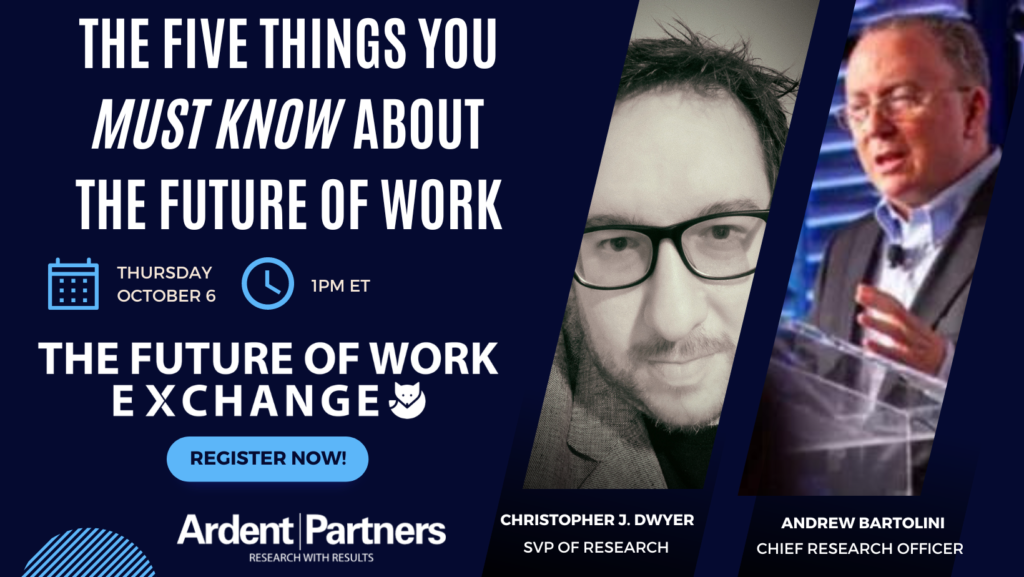The Future of Work impacts every workplace in one way or another. Monday’s CPO Rising article explores several trends that the Future of Work Exchange (powered by Ardent Partners) identified as shaping the Future of Work movement today and in the future.
Be sure to register for our webinar on Thursday (details below) to learn more about Future of Work dynamics and the talent acquisition landscape.
If you take a step back and say the words aloud (like I do dozens of times a day), it seems quite weird: the “Future of Work” is about the future, but it also revolves around the present, right? So, when we discuss the Future of Work, we’re essentially discussing the continuous optimization of work through current progressions and how it will evolve over the coming months and years.
And the most interesting idea around the Future of Work movement is that there are so many attributes of work, talent, technology, and business leadership that serve as real-time accelerants and harbingers of things to come.
Here are several trends the Future of Work Exchange believes are driving this moment today (and will drive tomorrow):
The “human” elements of work and talent. From pandemic-driven anxiety and the desire for more purposeful work, today’s business professionals crave more than just a paycheck. These workers truly require an emotional connect with their work in such a way that it solves both the work-life integration problem and allows them some semblance of flexibility in both their personal and professional lives.
Direct sourcing’s continued impact on talent engagement and talent acquisition. Many large-scale enterprises have begun “reactive layoffs” in anticipation for a possible recession. However, as many news outlets would note, there are more job openings right now than there are job seekers. This weird labor market translates into the need for businesses to harness the power of talent pools, talent communities, and talent clouds to essentially overcome the rigidity of engaging and acquiring talent through traditional means.
The transformation of business leadership. This item has long been a foundational element of the Future of Work movement; however, the way leaders lead has been continually evolving since Day One of the pandemic. There is, of course, the notion of conscious leadership and being in-tune with the workforce. And, on top of that, especially today, business leaders must fuse empathy and flexibility into their strategies. They must contend with the remote vs. in-office conundrum, the specter of a recession, and applying the best talent retention strategies to their talent. Transformation, in this case, isn’t a one-shot alteration.
Artificial intelligence drives decision-making. AI can be considered “vaporware” to some executive leaders, however, many of the prominent solutions in the workforce technology industry provide real-deal AI to help procurement, HR, and talent acquisition leaders understand the best-fit talent for a role, how their workforce will look given current economic trajectories, and support DE&I initiatives, as well as fuel enhanced candidate screening and candidate assessment.
The strategic application of new and innovative work models. Worker-led work structures. Digital collaboration augmented by infrequent in-person meetings. AI-fueled process management. Consumerized capabilities across core enterprise functions. An enhanced hiring manager experience. Developing a path to total talent acquisition (and then, perhaps, total workforce management?). The reimagination of worker productivity. These are all innovative ways of rethinking the boundaries of how work gets done, and, true extensions of the Future of Work movement.


